Loading and unloading of ballast water
Buoyancy balance
Ballast water loading and unloading is used to stabilize ships at sea at various stages of navigation, ballast water is pumped to maintain safe operating conditions during the voyage.
This practice reduces stress on the hull, provides transverse stability, improves propulsion and maneuverability and compensates for weight variations in various load levels, including fuel and water.
Risks and consequences of ecosystem alteration
While ballast water is essential for modern, safe and efficient shipping operations, it can pose serious ecological, economic and health problems due to the multitude of marine species carried in ships' ballast water.
In fact, in past years, ballast water loading and unloading operations in different geographical areas have produced significant imbalances in local marine ecosystems, caused by the introduction of invasive species such as bacteria, microbes, small invertebrates, eggs, cysts and larvae of various species.
The transferred species can survive to establish a breeding population in the host environment, becoming invasive native species competing with each other and multiplying to parasitic proportions.
Scientists first recognized signs of an alien species introduction after a mass appearance of the Asian phytoplankton alga Odontella (Biddulphia sinensis) in the North Sea in 1903. But it was not until the 1970s that the scientific community has begun to look into the issue in detail. In the late 1980s, Canada and Australia were among the countries that had particular problems with invasive species and brought their concerns to the attention of the IMO's Marine Environment Protection Committee (MEPC).
The problem of invasive species in ship's ballast water is largely due to the expansion of trade and traffic volume in recent decades, and as seaborne trade volumes continue to increase, the problem may not have caught up yet. its peak. The effects in many areas of the world have been devastating and quantitative data show that the rate of bio-invasions continues to increase at an alarming rate and new areas are continuously being invaded.
The spread of invasive species is now recognized as one of the greatest threats to the ecological and economic well-being of the planet. These species are causing enormous damage to biodiversity and the precious natural riches of the earth on which we depend. The direct and indirect effects on health are becoming increasingly serious and the damage to the environment is often irreversible.
The Ballast Water Code: the regulatory tool for the protection of biodiversity
The International Maritime Organization (IMO) introduced the Ballast Water Code (BWC) in 2004 to deal with the control and management of water and ballast water sediments for all ships over 400 gt.
The Ballast Water Management Convention (BWMC), which entered into force on 8 September 2017, requires ships to treat the water contained in their tanks to remove invasive species such as Undaria Asiatica, Vibrio cholera, Green Crab European, North Pacific starfish or make them harmless before unloading at the ports of arrival, issuing an international certificate and noting each movement in a special register.
Approval of Ballast Water Management Systems
During the development process of the BWM Convention, considerable efforts were made to formulate appropriate standards for ballast water management. The standards for the exchange of ballast water in the open sea and the quality standards for its discharge were therefore defined. Ships carrying out ballast water exchange must do so with a volumetric ballast water exchange efficiency of 95%, and ships using a Ballast Water Management System (BWMS) must meet a quality standard based on an agreed number of organisms per unit volume.
Regulation D-3 of the BWM Convention requires that Ballast Water Management Systems used to comply with the Convention must be approved by the Administration taking into account the Guidelines for the Approval of Ballast Water Management Systems (G8 ). The Guidelines (G8) were revised in 2016 and converted into a Mandatory Code for the Approval of Ballast Water Management Systems (BWMS Code), adopted by MEPC 72 (April 2018) and entered into force in October 2019 .
Regulation D-3 also requires that ballast water management systems using Active Substances, to comply with the Convention, be approved by the IMO in accordance with the Procedure for the Approval of Water Management Systems of ballast which use Active Substances (G9).
The G9 procedure consists of a two-level process: basic approval and final approval, to ensure that the ballast water management system does not pose unreasonable risks to the environment, human health, property or resources.
Learn more and download the IMO BWM Convention
Ballast water management
Ballast water management takes place in three stages:
- Cargo: during ballasting, the water is filtered at 50 microns to remove particles and organisms and, after being treated, it is then conveyed to the ship's ballasting system.
- Disinfection treatment: the main technologies used for this phase, which is fundamental for the management of ballast water, are UV irradiation and the dosage of chemical treatments with ozone or chlorine.
- Unloading: it is allowed only when the safety of the crew and the ship is guaranteed and can take place by exchange in the open sea or unloading in an area designated by the port State. In any case, these operations must guarantee compliance with the guidelines indicated by the Convention and in compliance with the International Ballast Water Management Certificate (IBWMC).
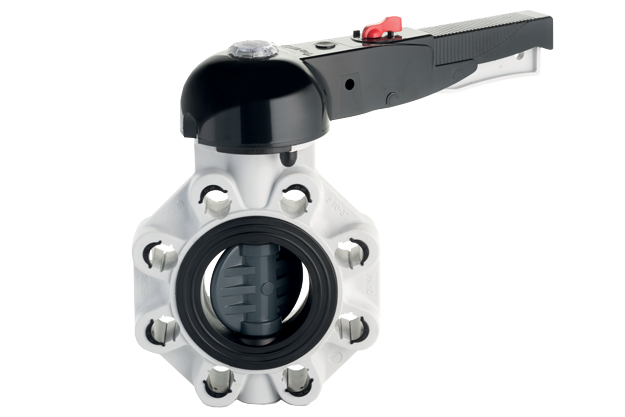
Aliaxis solutions
FK Heavy duty Butterfly valve with handle lock
Technical data
- Standards: UNI EN ISO 1452, UNI EN ISO 15493, UNI EN ISO 15494
- Size range: DN40 - DN 400
- Joint: Flanged ISO 9624, ISO 7005-1, EN 1092-1, DIN 2501, ANSI B16.5 Cl.150
Nominal Pressure:
- Wafer version: DN 40÷250: PN 10 - DN 300: PN 8, DN 350: PN 7 - DN 400: PN 6 with water at 20 °C
- Lug version: DN 65÷200: PN 10 - DN 250÷300: PN 6 with water at 20 °C
- Body material: PP-GR
- Disc materials: PVC-U, PVC-C, ABS, PP-H
- Stem: AISI 316 steel
- Seal materials: EPDM, FKM
- Wide range of manually operated versions and with electric or pneumatic actuator
Advantages
- High mechanical resistance thanks to the body in glass fiber reinforced polypropylene (PP-GR)
- Lug version with the possibility of installation also as an end-of-line valve or bottom drain or quick tank drain.
- Good fire behavior (compliance with low flame spread test according to ASTM D 635)
Plus
- Possibility of locking, unlocking, rapid maneuvering and graduated adjustment in 10 intermediate positions thanks to the ergonomic HIPVC handle
- High level performance over time thanks to the square section stainless steel stem completely isolated from the fluid according to ISO 5211.
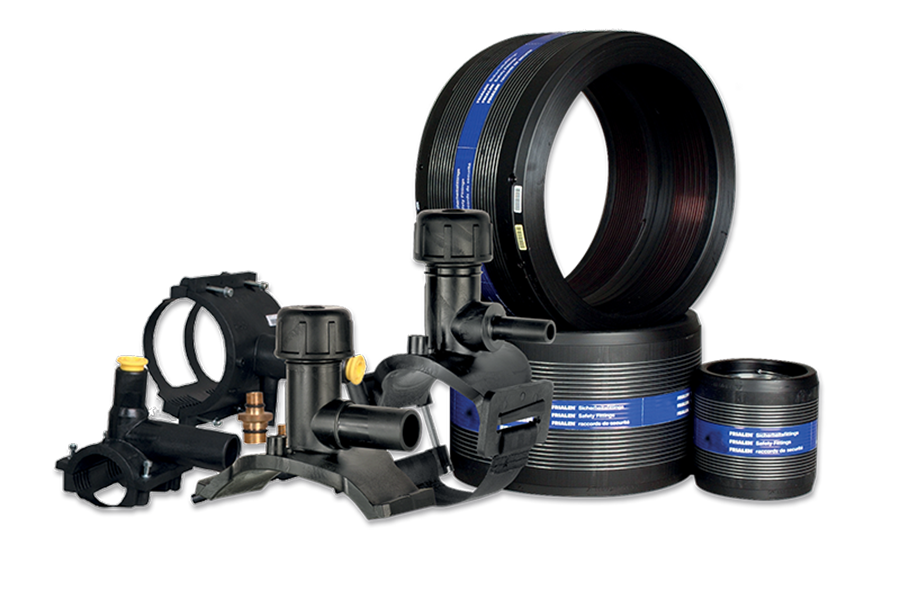
System of Pipes and Fittings in PE100 for Electrofusion
Technical data
- Pipe standard: UNI EN 12666
- Size range:
- Pipes up to d1200mm
- Fittings: Butt welding d16mm-800mm; Electrofusion d20mm-1200mm
- Joining: butt welding, electrofusion
- Temperature range: -20°C ÷ +60°C
- Nominal pressure: PN 10-16 with water at 20°C
Advantages
- Lightweight, flexible and impact resistant material, fully recyclable
- Suitable for pipes subjected to longitudinal stress due to the intrinsic elasticity of the material
- Easy and safe installation with butt welding or electrofusion techniques
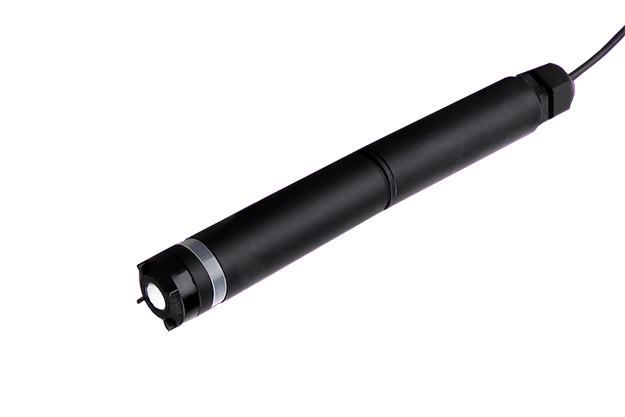
FLS instrumentation for disinfection monitoring
The measurement of the parameters in the various systems makes it possible to optimize performance and to intervene effectively in both the ordinary and extraordinary management of the individual processes.
Measurement of RedOx and Chlorine
To comply with the directives indicated by the BWMC, it is necessary to implement the handling of ballast water with disinfection systems that are based on the use of chlorine-based chemicals, ozone or via UV irradiation. Although treatment with UV rays has met with growing appreciation, chlorination still remains today the technique that guarantees the best compromise between efficiency, eco-compatibility and operating costs. The ballast water chlorination process can take place both by dosing hypochlorite, produced by electrolysis from sea water, and by the in-situ production of chlorine dioxide.
The FLS range of instruments allows these processes to be monitored with simple RedOx probes or with more specific sensors for measuring free chlorine or chlorine dioxide.
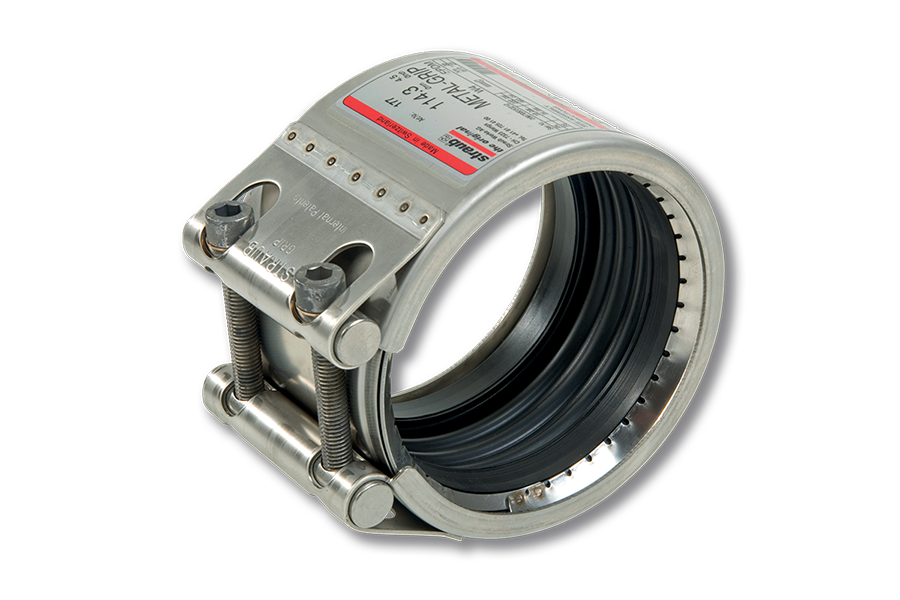
Mechanical joints for metal and plastic pipes
Technical data
- Size range: 30.0 ÷ 609, 6 mm
- Temperature range: -30°C to +100°C
- Sealing sleeve EPDM, NBR, FKM
- Components/Materials:
- Body: AISI 316L or similar
- Bolts: A4 - 80
- Tie rods: AISI 316L or similar
- Tape insert (option): AISI 316L or similar/PVDF
Advantages
- Installation on close lines or in small spaces thanks to the compactness of the design.
- Minimum installation time and optimized downtime
- Compensation of axial misalignments and angular deviations. Splicing and compensation in a single element.
- Weight reduced by 75% compared to flanged connections, increased payload.
- Reduction of the mechanical stress of the pipes from vibrations, oscillations and water hammers.
- Applicable on metal and plastic pipes (with the use of the reinforcement ring).

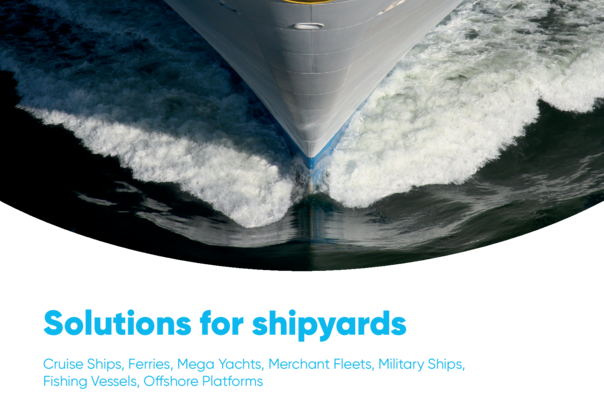
 get_app
get_app
 get_app
get_app